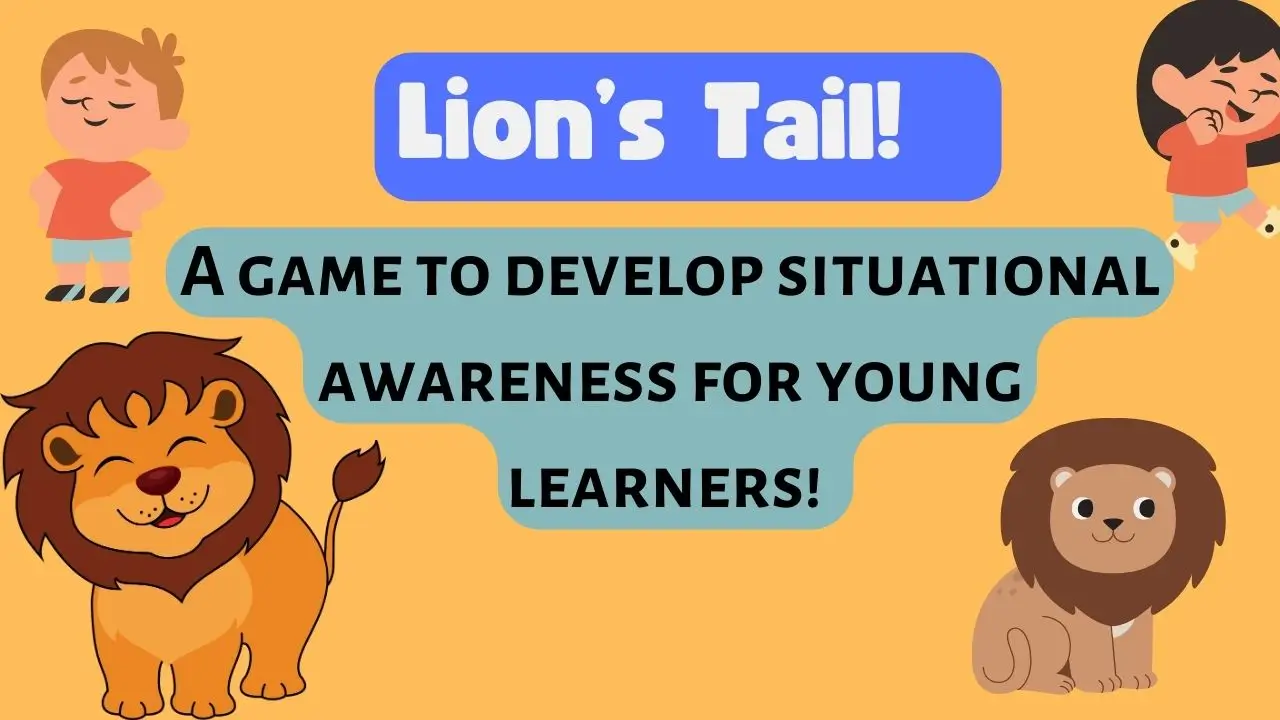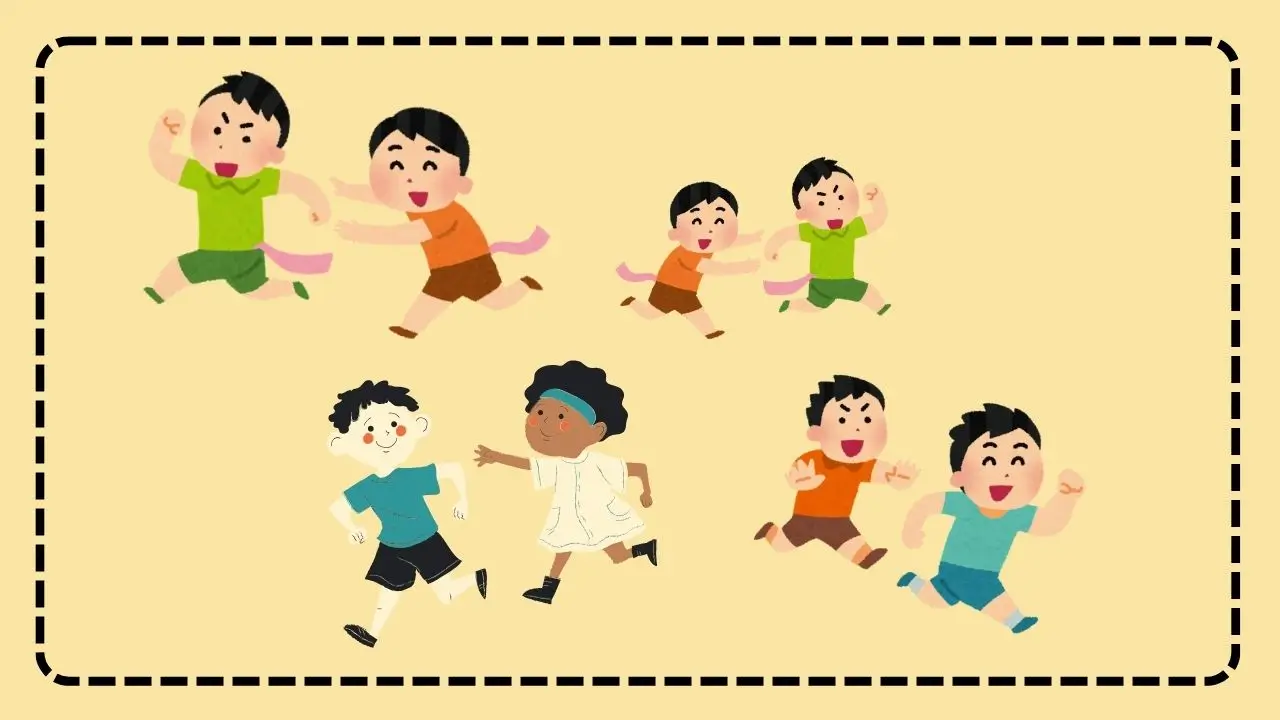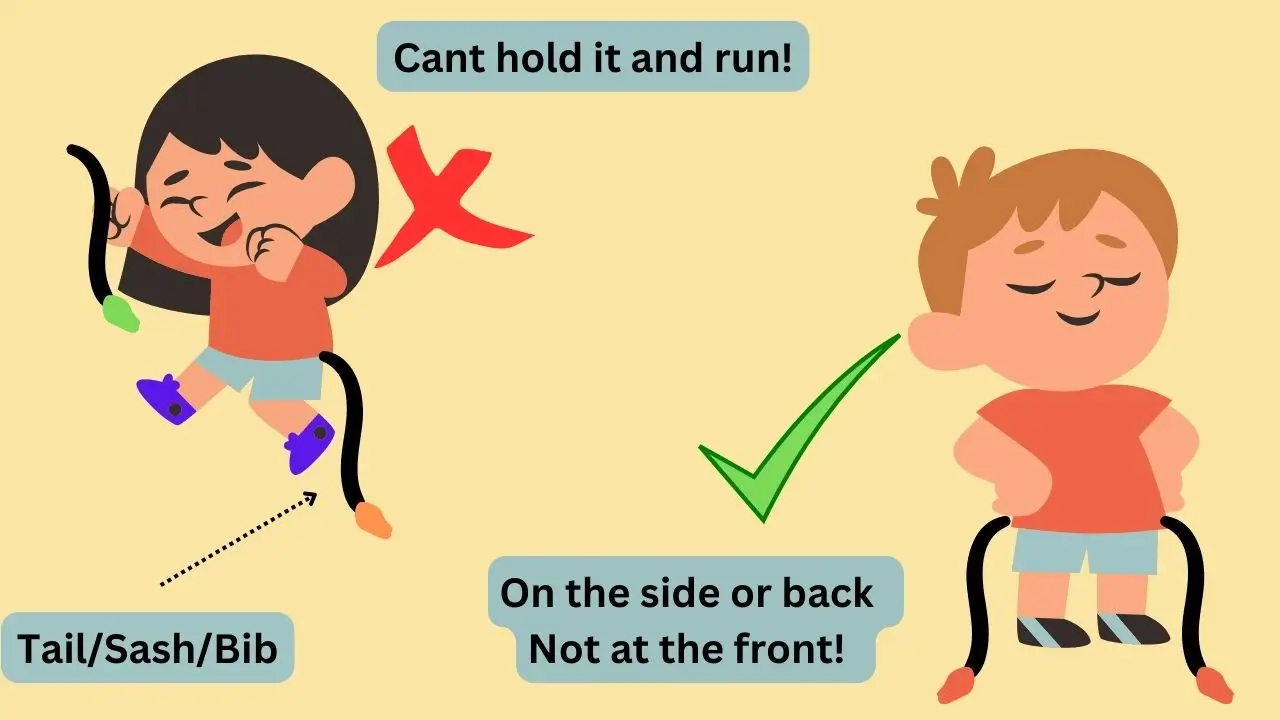Lions Tails | Class Warm-up Game | Physical Education
Apr 25, 2024


Kas
A go to game for all ages! Help students develop situational awareness through a high paced engaging game that can easily be modified to suit all ages of learner. This game requires minimal resources and is able to be played both indoors and in outdoor spaces.
This teaches young students to participate with every member of their class and can also serve as a tool to learn about playing fairly and following rule sets. In addition this minor game teaches students to implement fundamental movement skills in a dynamic environment, serving as a medium for discussion on what FMS skills we use to enable us to be effective in this minor game and other games in the future!
What Do You Need?
- An area of a basketball court or an outdoor space
How To Play?
- An area of play is identified by the teacher, the boundaries are made clear by using markers. Students can only play this game within the boundaries
- Each player receives a tail- this can be a sash/tag/bib
- Students will need to place this in their waist line or in their pocket. 70% of the tail needs to hang on the outside of the student’s shorts/pants. The 30% that’s in a pocket or waistband is there just to secure it.
- All students are against each other
- When the game starts, students are tasked with the goal of grabbing as many other students ‘tails’ as possible
- students also need to try and not have their tail removed by another player
- The student at the end of the game with the most tails is the winner
- The game restarts with all tails returned to original players

Key Rules
- Students are not allowed to protect their tail by holding it or securing it to themselves
- Students cannot stop another player from grabbing their tail, they can only attempt to get it back by obtaining it again
- When a player grabs a tail, they have a 10-second ‘immunity’ time where they cannot be tagged until they secure their tail.
- Students cannot grab more than one tail from another player at once
- If a tail is dropped, it is free game for whoever picks it up

What is the goal of the game?
- To avoid other players
- Attack other players by obtaining their tag/sash
- Display FMS and tactical/situational awareness by obtaining the most sashes
How can you modify it?
Make It Easier!
- Bigger playing space
- Create teams
Make It Harder!
- Smaller playing space
- No immunity time
- If you lose your tail you are eliminated
What are the main skills being utilised?
Fundamental Movement Skills:
- Locomotor- run, jump, dodge, lunge, side step, leap
- Stability- turning, balance, stopping, bending, stretching
Tactical Skills:
- Scanning the field of play to make decisions
- Looking for gaps on the field to avoid being tagged
- Cooperative play, supporting teammates
- Following rules and structures of a game
- Critical thinking through decision-making
- Situational awareness
How Can Developing Situational Awareness Help Our Students?
- Safety: Situational awareness teaches students to be aware of their surroundings, potential hazards, and other individuals in their environment (Lachmann, 2019). In physical education lessons, this skill is crucial to prevent accidents and injuries. Whether students are participating in team sports, gym activities, or outdoor exercises, being aware of their surroundings helps them avoid collisions, trips, and other accidents (Shaffer, 2017). By developing situational awareness, students can navigate physical activities safely and minimize the risk of harm to themselves and others.
- Performance Enhancement: Situational awareness enhances students’ performance in physical activities by allowing them to anticipate and respond effectively to changing situations (Stanton, 2016). Whether it’s reacting to an opponent’s move in a game, adjusting their position on a playing field, or adapting to environmental conditions during outdoor activities, being situationally aware enables students to make better decisions and perform at their best (Salmon et al., 2015). By honing this skill, students can improve their agility, reaction times, and overall performance in various physical education activities.
- Social Interaction: Situational awareness fosters effective communication and collaboration among students during group activities and team sports (Hancock et al., 2017). By being aware of their teammates’ positions, movements, and intentions, students can coordinate their actions more efficiently, leading to better teamwork and collective success (Nasir & Cooks, 2019). Additionally, situational awareness helps students understand the dynamics of social interactions within physical education settings, such as respecting personal space, following rules, and cooperating with others (Hänninen et al., 2020). These interpersonal skills are not only valuable in sports and physical activities but also in various aspects of life, including academic teamwork, workplace collaboration, and social relationships.
Sources:
- Hancock, P. A., Billings, D. R., Schaefer, K. E., Chen, J. Y., & De Visser, E. J. (2017). A meta-analysis of factors affecting trust in human-robot interaction. Human Factors, 59(4), 476-509.
- Hänninen, R., Mäkelä, K., Kokkonen, M., & Laakso, L. (2020). Social interactions in physical education from the perspectives of teachers, students and parents. European Physical Education Review, 26(3), 724-739.
- Lachmann, M. (2019). Situational awareness in high-risk environments. In Situational Awareness in Complex Systems (pp. 99-122). CRC Press.
- Nasir, N. I. S., & Cooks, N. (2019). Situated expertise in an after-school setting: Toward equitable STEM learning opportunities for marginalized youth. AERA Open, 5(3), 2332858419871763.
- Salmon, P. M., Stanton, N. A., Walker, G. H., Jenkins, D. P., & Rafferty, L. A. (2015). Measuring situation awareness in complex systems: Comparison of measures study. International Journal of Industrial Ergonomics, 47, 15-25.
- Shaffer, D. M. (2017). Attention in action: The brain mechanisms of expertise. Oxford University Press.
- Stanton, N. A. (2016). Situation awareness: Measurement and assessment. CRC Press
Helpful Resources:
- Fundamental Movement Skills: Flash Cards + Circuit
- Coloured Cones For Teaching P.E! (Amazon)
- Coloured Sit Spots for behaviour management! (Amazon)
- Awesome Teacher Planner! (Amazon)
- How to create a better work life balance?
- Why are minor games important for students to learn?
- Emotional Regulation Posters
- Assessments for P.E- Ready to go
- What are invasion games?
- First time teaching P.E? Heres where to start!
